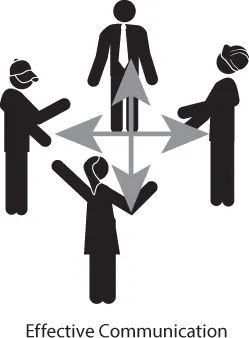
Management and Supervisory Practices for Environmental Professionals
Advanced Competencies, Volume II
Herman Koren, Alma Mary Anderson
- 218 pages
- English
- ePUB (mobile friendly)
- Available on iOS & Android
Management and Supervisory Practices for Environmental Professionals
Advanced Competencies, Volume II
Herman Koren, Alma Mary Anderson
About This Book
Based on the lifelong experiences of two authors as supervisors and teachers, the Fourth Edition of this bestseller provides up-to-date information for newly promoted or management-aspiring professionals and engineers in the fields of environmental health, occupational health and safety, water and wastewater treatment, public health, and many others.
This second volume explains the advanced principles that supervisors need to understand the art of communications, resolving communications problems, and the supervisor/manager's role in teaching, counseling, and managing employee performance and employee health and safety.
In addition to those already practicing professionals in their fields, this book is an excellent resource for students interested in learning management skills prior to entering the workforce.
Features of the Fourth Edition
-
- Helps to understand and utilize organizational structure to facilitate problem solving
-
- Offers a practical set of methods, tools, and techniques, all illustrated and easy to understand, for achieving leadership qualities
-
- Provides concise but essential discussion material for each topic, using the practical art of communications
-
- Includes thorough updates and many new case problems with answers provided
-
- Introduces self-testing questions for different situations and practical exercises utilizing an individual's own work experience for answers
Frequently asked questions
1
Communications Part I
Contents
Learning Objectives
- Understand how the communication process works.
- Recognize the importance of the concept of one-way versus two-way communications and why two-way communications are necessary.
- Recognize the many human barriers to communication and how to avoid them.
- Understand that communications go upward, downward, and in a horizontal manner, and know the types of communications that go in these directions.
- Recognize the variety of communications problems that exist and know how to compensate for them.
- Recognize that a grapevine will exist in the organization and what it is to continually provide proper information if grapevine problems are to be avoided.
- Understand the art of oral communications and the techniques of speaking, listening, and perceiving.
Fundamental Management Information
The Best Practices and related competencies are of great significance to the success of new, existing programs; however, despite the finest of Best Practices and related competencies, the supervisor/manager’s communications to the working staff could make a program successful or could cause it to be a failure. In a communication, the presenter gives an oral or written statement and the receiver receives the statement, perceives what was said, and acts on it in a positive manner. The presenter then needs to evaluate the results to determine whether the communication has been successful.
Barriers to Communications
- Too little information is provided to carry out the prescribed tasks.
- Information overload, especially in a situation where a supervisor/manager can easily receive 130–200 emails a day.
- Too complex information.
- Inadequate technical or people-type training for the communicator.
- Lack of understanding of someone else’s culture.
- Lack of knowledge of the audience.
- Environmental problems interfering with the communication.
- Use of ambiguous or multi-meaning words.
- Feedback can be either verbal or nonverbal. Verbal feedback can be requested. Nonverbal feedback can be determined by observing facial expressions, gestures, body motions, and looking at the eyes, seeing if they are glazed, averted, or attentive.
- Selectivity is a means of screening communications to accept or reject that which is of importance to the receiver. Selectivity can become a serious barrier to communications.
- Perception of a message is the process by which an individual gives meaning to the communication. Perceptual defense is the screening out of environmental stimuli in order to concentrate on what is important.
Organizational Communications
- Advertising and promotional campaigns.
- Employee communications.
- Media relations.
- Training programs.
- Public relations.
- Governmental relations.
- The grapevine.
- Using employee opinion attitude surveys—the surveys should be unsigned.
- Using suggestion boxes.
- Using the open-door policy of management.
- Using informal gripe sessions.
- Using task forces to evaluate problems and programs.
- Using exit interviews.
Lesson Discussion
I. The Communication Process
